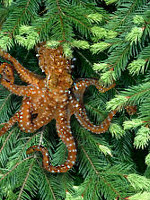Google a Day
A Google a Day is a new daily puzzle made by Google. Once you start playing, it will give a series of three very obscure questions and start a timer. You have to search for the answers to these questions (in the special search bar given by Google a Day, regular Google has spoilers and that's no fun) in a race against the clock.
The questions given were very random, which made searching for them interesting. The last question asked which modern clade or evolutionary group birds belong to, which seems like it would have a very straightforward answer, but each site we found seemed to have a different opinion, none of which turned out to be correct. I learned some very entertaining and random facts from using Google a Day. I also learned about effective searching and how sometimes, you have to search for one bit of information in order to find another.
Finding Good Sources
- Accuracy - is the information correct?
- Authenticity - is the source what it claims to be?
- Reliability - is the source created by an expert?
zapatopi.net

No comments:
Post a Comment